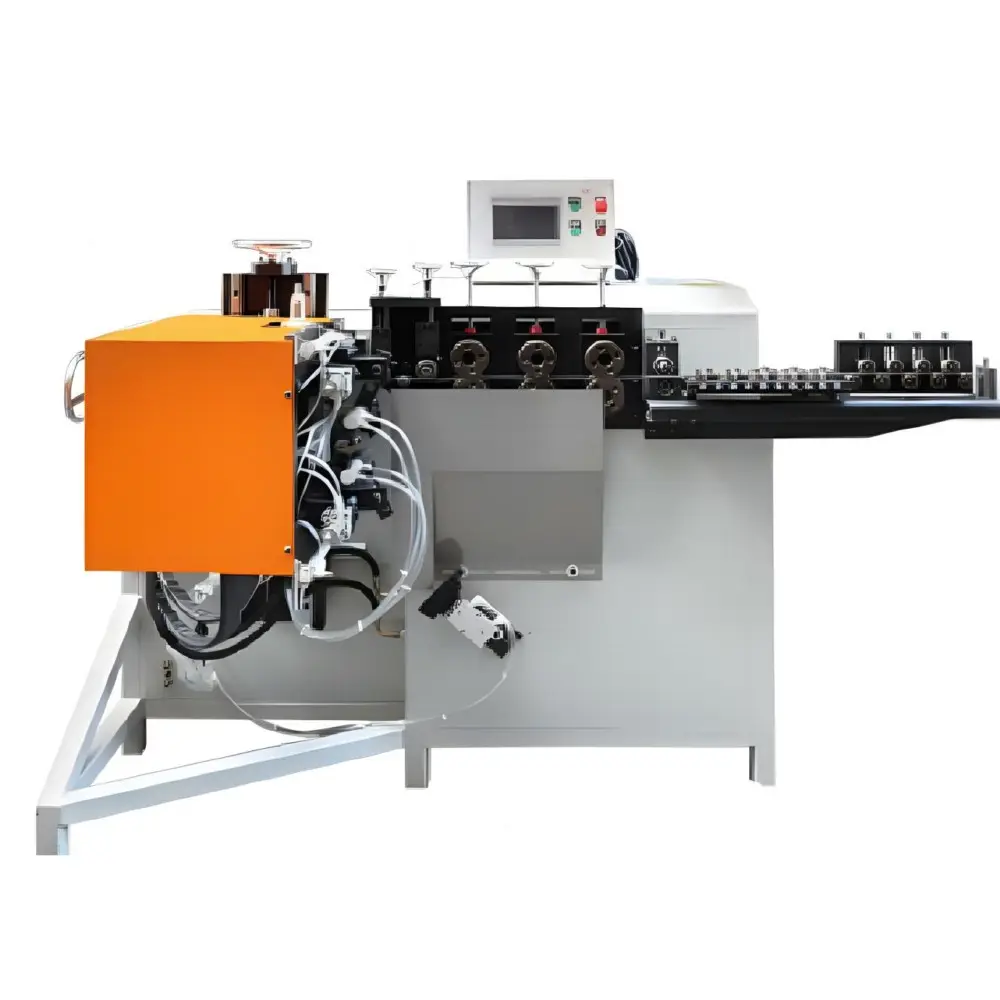Hoop Forming Machine (Special for Hula Hoop Industry)
Introduction
The hula hoop industry may look simple from the outside, but anyone who has tried to manufacture hoops at scale knows the hidden challenges. Inconsistent diameters, weak joint strength, deformation after forming, and uneven weight distribution are common issues that can compromise product quality and customer satisfaction. This is exactly where a Hoop Forming Machine becomes a game-changer. In this article, we will explore what the machine actually does, how it works, what benefits and trade-offs come with it, and how manufacturers can maximize return on investment. By the end, you will have a complete understanding of how a hoop forming machine can transform hula hoop production from a manual craft into an industrially reliable process.
Definition and Features of a Hoop Forming Machine
A Hoop Forming Machine is a specialized piece of mechanical equipment designed to bend plastic tubing (commonly PE or PP) into perfectly circular shapes, seal or connect the ends securely, and allow for customization in hoop diameter and thickness.
Key features include:
Automatic feeding for consistent tube length.
Precision bending system that maintains exact circle diameter without deformation.
Heating and sealing unit for strong, seamless joints.
Adjustable settings for different hoop sizes and weights.
Integration of decorative finishes during or after forming.
Safety mechanisms to prevent operator injury during continuous production.
In essence, the hoop forming machine takes raw tubing and turns it into a finished, sale-ready hula hoop with speed and accuracy.

The Process of Using a Hoop Forming Machine
The operation of a hoop forming machine can be broken down into clear steps:
Tube Preparation – Plastic tubing is cut to the desired length. Some machines integrate cutting automatically.
Heating and Softening – The ends of the tube are heated to make them flexible for sealing.
Forming the Circle – The machine bends the tubing into a circular shape using precision rollers or guides.
Sealing or Jointing – Heated ends are fused, sometimes reinforced with a connector insert.
Cooling and Stabilizing – The newly formed hoop is cooled to maintain roundness and strength.
Decoration and Finishing – Wrapping, coloring, or grip patterns are applied.
Quality Check – Final hoops are inspected for accuracy, joint integrity, and surface finish.
Tips for better operation:
Maintain consistent heating temperatures to avoid weak seals.
Calibrate rollers regularly to prevent oval shapes.
Keep spare sealing connectors available for high-speed production.
Document standard operating parameters for each hoop design to reduce errors.
Advantages and Disadvantages
Advantages
High consistency in diameter and shape.
Labor savings compared to manual methods.
High throughput, producing hundreds to thousands of hoops per day.
Easy customization for different sizes and designs.
Reduced waste and higher efficiency.
Improved product durability and customer satisfaction.
Disadvantages
Initial investment cost for small-scale businesses.
Requires trained staff for maintenance and calibration.
Industrial machines need adequate space.
Operators need training to optimize settings.
Power consumption can be significant for older models.
Choosing the Right Hoop Forming Machine
Selecting the right machine depends on your production scale, budget, and business model.
Factors to consider:
Production Capacity: Small workshops may only need a semi-automatic model, while large factories require fully automatic, multi-line systems.
Material Compatibility: Ensure the machine can handle PE, PP, or composite tubing if you want to expand product lines.
Customization Options: Look for machines with adjustable diameter and thickness settings.
Integration with Decoration Units: If you plan to sell decorative hula hoops, integration with wrapping units saves time.
Supplier Reputation: Choose manufacturers with reliable after-sales service and spare parts availability.
Energy Efficiency: Newer models may consume less electricity while maintaining output.
Checklist before purchase:
Test sample production with the machine.
Request a warranty and service package.
Verify local support and spare parts supply.
Ask for references from existing clients.
Maintenance Checklist for Optimal Performance
To keep a hoop forming machine running at peak performance, regular maintenance is essential.
Daily: Clean rollers and heating units to remove plastic residue.
Weekly: Check calibration of bending arms and sealing units.
Monthly: Inspect bearings, lubrication points, and electrical connections.
Quarterly: Replace worn sealing connectors and update control software if applicable.
Yearly: Comprehensive overhaul including motor inspection, roller replacement, and safety system tests.
Pro tip: Create a digital maintenance log to track downtime and predict part replacements before failures occur.
Case Study: Factory Upgrade with Hoop Forming Machines
A mid-sized fitness equipment manufacturer in Southeast Asia previously produced about 500 hula hoops per day using manual bending and sealing. With the adoption of two fully automatic hoop forming machines, production increased to over 4,000 hoops per day, while defect rates dropped from 12% to 2%.
Key outcomes:
Labor costs reduced by 40%.
Faster lead times allowed expansion into new export markets.
Return on investment achieved in less than 8 months.
Industry Trends and ROI Considerations
Trends: Fitness hula hoops, LED hoops, and weighted hoops are driving demand for reliable machines.
ROI Example: Manual production might yield 100 hoops/day with 10% defects, while a machine can produce 1000/day with only 2% defects, quickly paying back investment.
Sustainability: Newer machines reduce energy consumption and material waste, aligning with global eco-friendly standards.
Customization Demand: Customers increasingly expect personalized hoops, and flexible machines help manufacturers meet this demand without slowing production.
Conclusion
A Hoop Forming Machine is more than just a bending tool; it is the backbone of modern hula hoop manufacturing. From ensuring perfect roundness to enabling mass customization, this machine transforms hoop production into an efficient, profitable, and scalable process.
For manufacturers, investing in such a machine means:
Better product quality
Lower operational costs
Higher output
Stronger competitiveness
Future-proof adaptability for new hoop designs
Understanding its functions, benefits, and industry relevance is the first step toward building a successful hula hoop business. With the right equipment, proactive maintenance, and market-oriented production strategies, manufacturers can stay ahead in the fast-growing hula hoop industry.
Table of Contents
- Hoop Forming Machine (Special for Hula Hoop Industry)
- Introduction
- Definition and Features of a Hoop Forming Machine
- The Process of Using a Hoop Forming Machine
- Advantages and Disadvantages
- Choosing the Right Hoop Forming Machine
- Maintenance Checklist for Optimal Performance
- Case Study: Factory Upgrade with Hoop Forming Machines
- Industry Trends and ROI Considerations
- Conclusion


